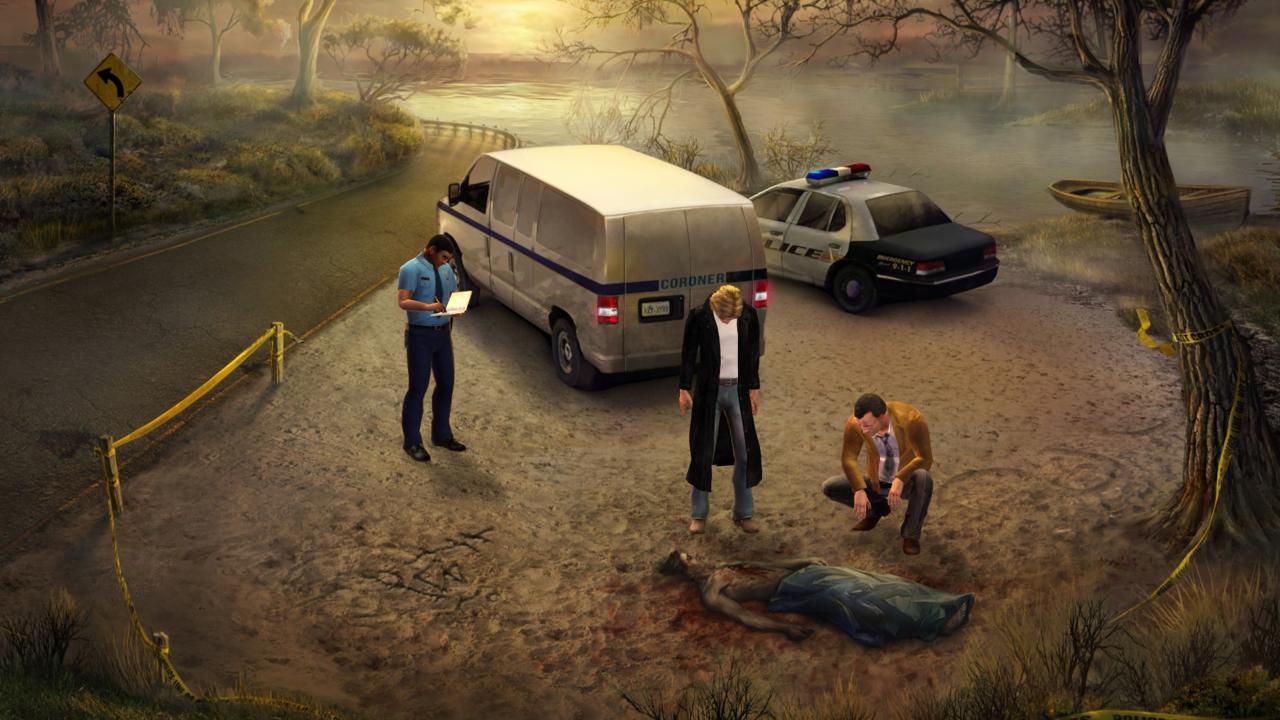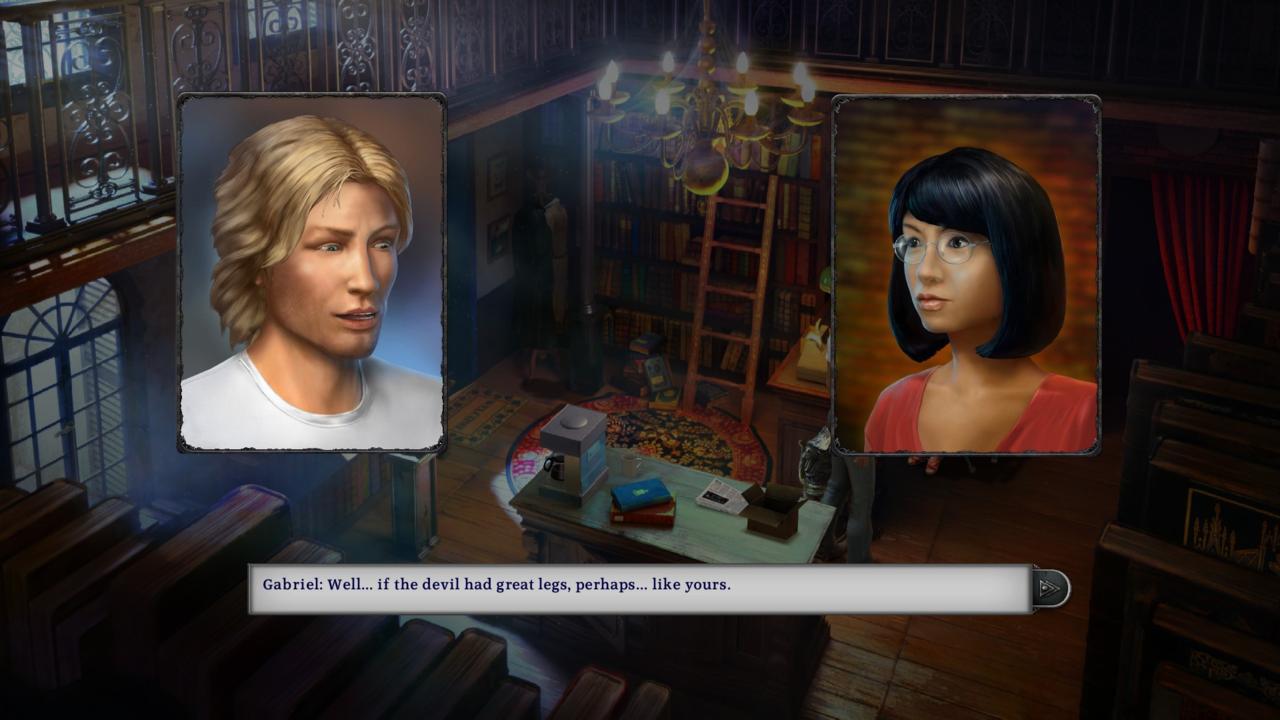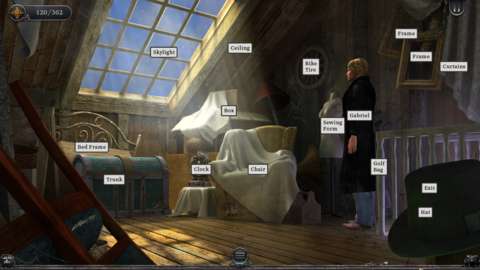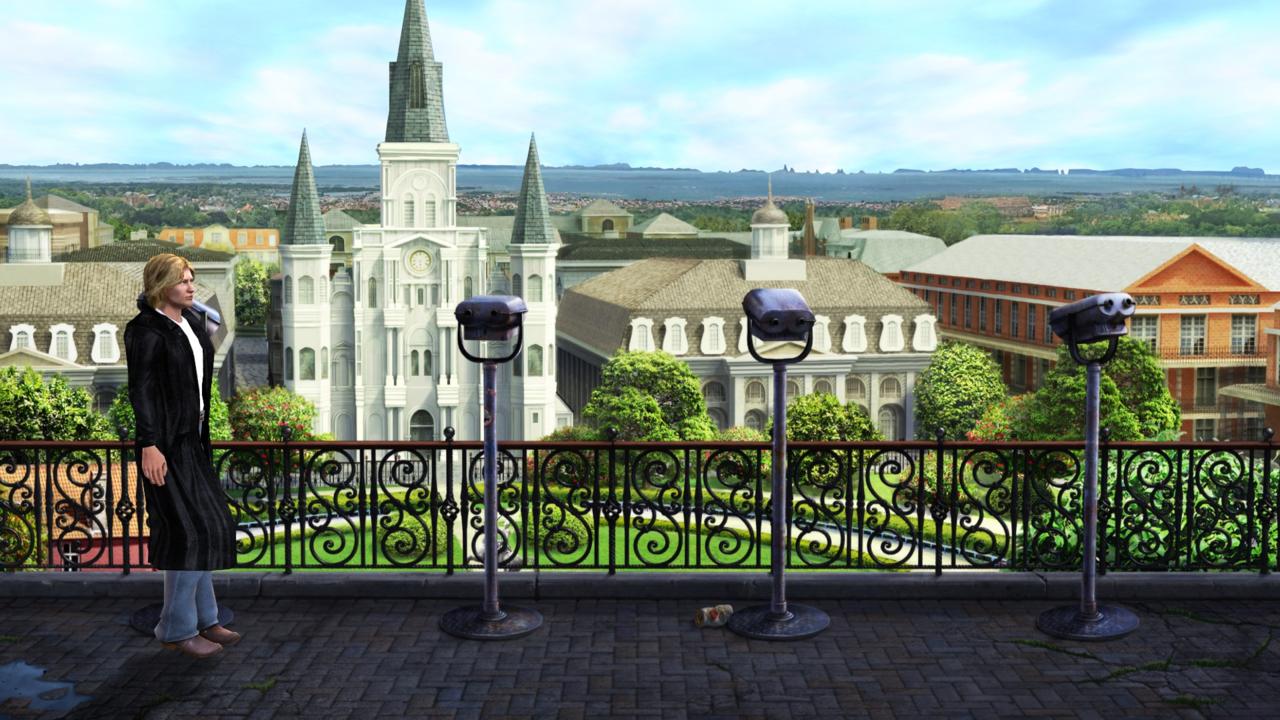Over twenty years ago, a rash of bizarre serial killings rocked New Orleans with its grim voodoo trappings. Yet the Voodoo Murders did more than just turn The Big Easy on its side; they kicked off a dark, mature mystery, shaking up a landscape of point-and-click adventures predominately ruled by comedic misadventures and light-hearted tales of fantasy. Two decades later, Gabriel Knight: Sins of the Fathers 20th Anniversary Edition reanimates that seedy drama with an admirable facelift, all-new puzzles, and a wealth of nostalgia-inducing behind-the-scenes content. But not everything is made better with a fresh coat of paint, as edgy storytelling is dulled by dated delivery, while technical blemishes and some obtuse puzzle solving hamper the experience.
Despite his blonde Prince Valiant modernization, the t-shirt-and-jeans-clad Gabriel Knight is still very much a persona created in 1993. He's the romanticized ambitionless writer, and delivers his sultry southern tones with an Elvis-like embellished seduction, noticeably replacing the game's original voice acting as part of the audio update. In fact, every new character model, re-envisioned locale, and stylishly drawn cutscene finds a way to stay true to the spirit of the source, while popping in new attitude. The enhanced audio and visual treatment is handled terrifically nearly everywhere, with exceptions being a few stray musical choices and dialog that feels purposefully overdelivered.

But the updates to the sights and sounds also serve to spotlight the cultural tones of the early '90s, and how they can feel out of place despite the fact they admittedly retrace their steps through that period. It's chiefly noticeable with Gabriel, who faithfully reprises his role of too-handsome-to-resist charmer who makes unctuous advances toward the opposite sex. And despite a cast of strongly written female characters, he mostly succeeds in his efforts, as intelligent, powerful women suddenly succumb to his wiles with alarming abruptness. It's in these moments that melodramatic dialog, and its overdone delivery, can tiptoe into cliché and seem more like a parody of the times rather than at home in them.
But his lascivious priorities aside, Gabriel is remarkably adept at getting what he wants. By massaging his connections with local law enforcement, and occasionally breaking the rules, he's managed to finagle an inside scoop on the Voodoo Murders as an outline for his next novel. It's a sturdy foundation that supports the first-rate murder-mystery storytelling of designer and author Jane Jensen's excellently researched infusion of history and Cajun flavor. And like the best mysteries, stakes continue to rise as pedestrian police work gives way to a globe-spanning supernatural occult that finds Gabriel, and his lineage, much more connected than it would first appear.

That shift in tone is steadily unraveled over a dozen hours of careful clue-gathering and puzzle-solving gameplay around the outskirts of New Orleans and the city proper. There's an almost staggering amount of things to see, interact with, and click on, and hours of detailed writing ready to be ingested through conversations with an eclectic supporting cast. Thankfully, all that content is smartly paced and broken up over the course of several days, with a rough objective set for each day, and constantly evolving characters and settings that allow for repeated visits without growing stale.
And though vital bits of information are hidden all over therein, many of the books and conversations serve no greater purpose than to flesh out the world; which is a lofty purpose in its own right. This fabricated snapshot of 1990s' New Orleans never feels overly linear. Like wandering through a museum, you're free to explore and pick up bits of pertinent, historical, or even irrelevant information without feeling forced toward the next checkpoint.
Most case clues in that dense fog of information eventually point toward the next with a little patient observation, along with a sense of accomplishment when the plucky tune indicating success chimes out. Of course that comes with a consideration: It's deceptively easy to get lost and stuck in the web of possibilities should you miss a beat. While constantly experimenting with new ways to connect pieces and further the case is a crucial part of Gabriel Knight, some of those connections are so vague and reaching that solving them by trial-and-error isn't realistic.
There's an almost staggering amount of things to see, interact with, and click on, and hours of detailed writing ready to be ingested through conversations with an eclectic supporting cast.

Fortunately, the 20th Anniversary Edition comes complete with a handy hint book that provides high-level nudges on where to go next, slowly revealing more details before finally just telling you what to do. It's a great inclusion that allows you to tailor the level of help you're given with particularly chin-stroking puzzles, but it comes with a fatal flaw. In some cases, when you're absolutely stuck and just want to know what to do progress the story, the final hint fails to deliver the answer.
After almost an hour spent exhausting conversation topics with Gabriel's grandmother and searching around her house for clues that could help to solve a clock puzzle in her attic, I gave up and ashamedly asked the hint book. Unfortunately this particular obstacle's final hint--the one that in nearly every other case spells out the answer--simply suggested I send Gabriel into his grandmother's attic to learn more about his family history. And so I resolved to do what no puzzle should ever force you to: I starting trying out each of the 72 combinations. I finally got it somewhere in the thirties.
And despite being the exception rather than the rule, those vaguely solvable puzzles that slam the brakes on gameplay progression are my biggest gripe with the Gabriel Knight: Sins of the Fathers 20th Anniversary Edition; though they're not the only distracting element of the remake.
Along the way, small but obnoxious technical hiccups regularly blow away the air of mystery and immersion so carefully cultivated. Sometimes characters would contort in terrifying ways when interacting with Gabriel, or Gabriel himself would walk through a solid object, or become stuck as I issued an order while he was performing another. Each time this happened, part of the atmosphere disappeared, and I was no longer uncovering a mystery, but trying to progress through a game. These issues punctuate the experience, and though ostensibly minor, they do so with exclamation marks.

And yet breaking that illusion is to some degree one of the 20th Anniversary's greatest feats. Through the bonus special edition content, slowly unlocked alongside your story progression, a bevy of behind-the-scenes goodies are available to pore over. Enlightening tidbits like audio interviews with Jane Jensen and other members of the original design team, alongside storyboards, concept art and fantastic side-by-side asset comparisons that really emphasize just how far the medium has come in twenty years.
And that's really what Gabriel Knight: Sins of the Fathers 20th Anniversary Edition has to offer. For every great point, there's some small, nagging nick in the experience. While the strong narrative and precisely delivered story is as mature and dense as it's ever, and positively carries the experience, it's also beginning to show its age. For every great string of clues that creatively come together to open up a new leg of the mystery, there's a puzzle that brings the experience to a crawl. Gabriel Knight is a conflicted man that, while rough around the edges, good at heart, and easy on the eyes, struggles with his own demons and obligations to his name. And twenty years later, the same can be said for his return to the medium.